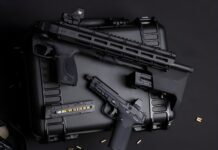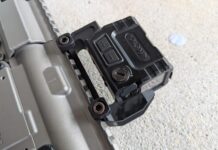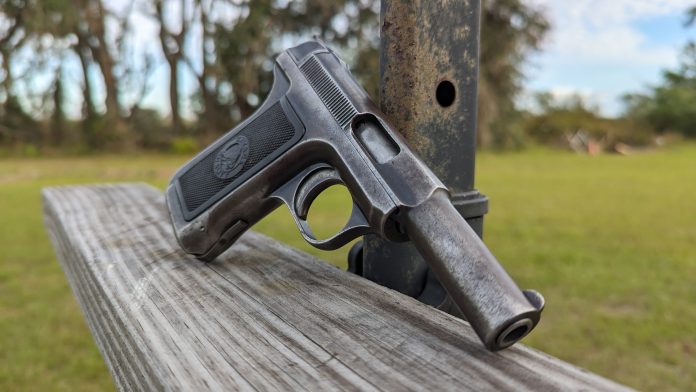
The Savage M1907 is one of the most historically underrated guns out there. When we talk about innovative handguns, we get firearms like the Colt Single Action Army, the M1911, and the Glock series, but the poor Savage M1907 never gets mentioned. To me, that’s incredible because if you looked at a modern concealed-carry firearm and compared it to the features and traits of the Savage M1907, you’d be pleasantly surprised. In fact, I almost don’t want the gun to be popular because they are still a bargain to pick up.
Let’s dig into the classic handgun by showing just how innovative it is.
The Savage M1907 and Today’s Firearms
If we were to compare the Savage Model 1907 to a modern firearm, there would be two big differences. First, the original M1907s were .32 ACP guns, and second, the gun doesn’t have modern safety features like a drop safe. (later models were produced in .380 ACP) Other than that, it’s pretty modern for being over a century old.
First off, the guns use a double-stack magazine. As far as I can tell, this was the first successful pistol to integrate a double-stack magazine in its design. That means there were 30 years between the Hi-Power and the M1907. The M1907 could hold ten rounds of 32 ACP and nine rounds of .380 ACP. Most modern compact handguns can hold at least this much ammo, albeit it’s 9mm instead of .32 ACP.
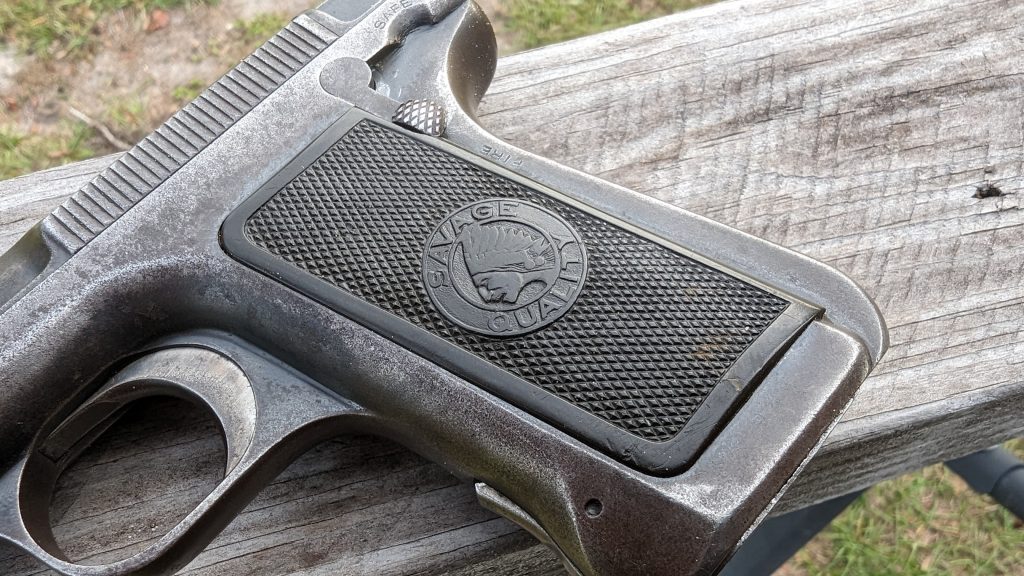
The gun also used a striker-fired design. That’s pretty nice for a weapon made in 1907. There appears to be a hammer, but that is actually a cocking lever. The user could decock the gun by manually lowering it or recock it for a second shot. Racking the slide rearward automatically cocked the gun.
The gun itself was very easy to take apart for its time period. It would be somewhat difficult by today’s standards. However, the gun had no screws, even for the grips. You might say, well, neither does my Glock. Yep, but guns like the FN M1900 did. It was an impressive feat for the time period.
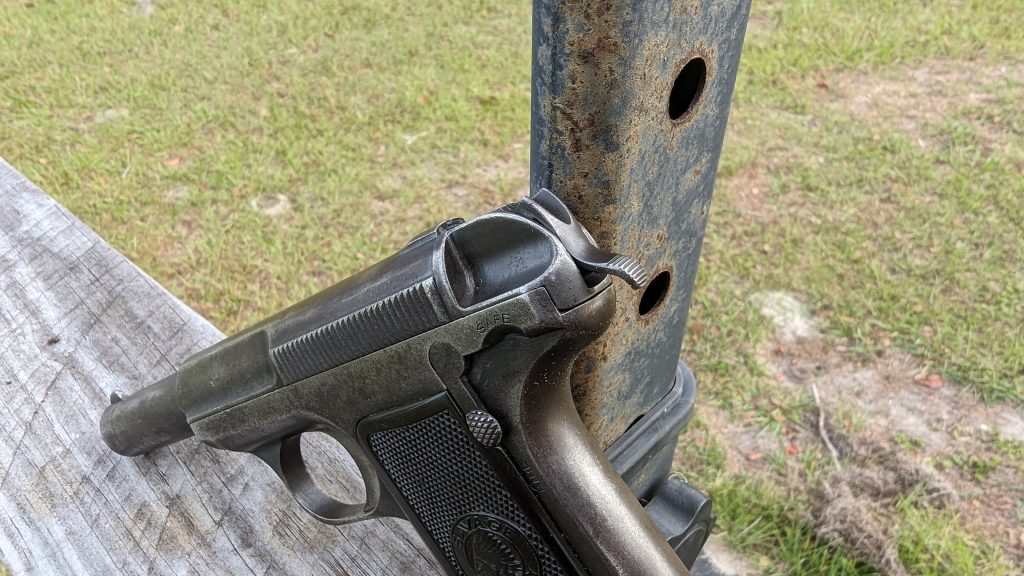
While most semi-auto guns of the era used blowback operation, the Savage M1907 used a delayed blowback design with a rotating barrel. This allowed the gun to use a lighter slide. In fact, it was five ounces lighter than the Colt M1903.
The Savage M1907 At the Range
The Savage M1907 is what created my love for the .32 ACP cartridge. It’s super pleasant to shoot. The gun’s recoil, noise, and overall is best described as a burp. It just burps and barely moves. It’s super easy to shoot and immensely enjoyable. The little gun has tiny little sights. They are functional, but don’t expect to be fast.
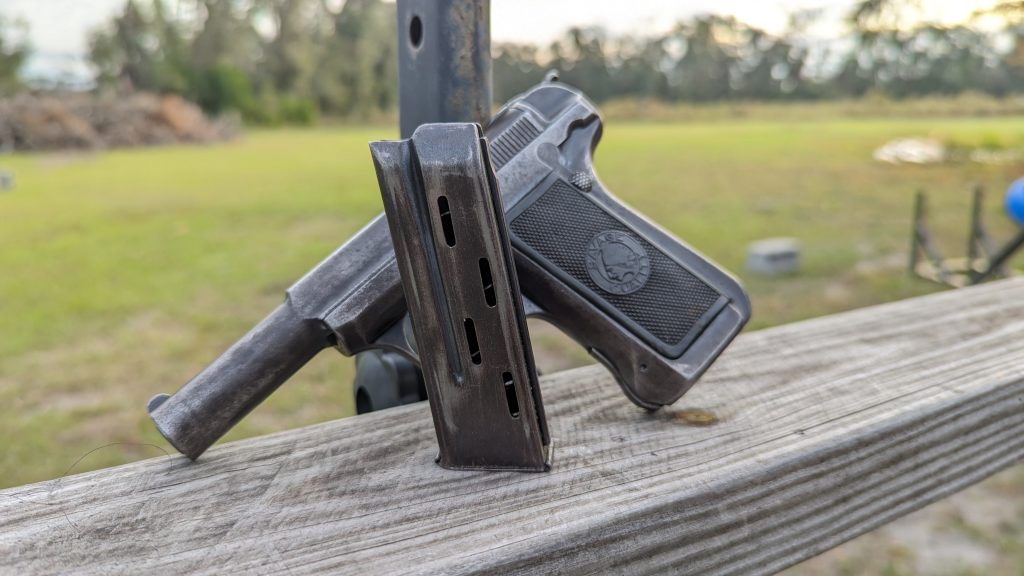
My M1907 functions reliably and doesn’t give me any issues. I only shoot FMJs out of it, as John Moses Browning intended. I’m betting hollow points would create a fun issue with rimlock and that’s not something I want to deal with.
Accuracy is fine. The little sights do you know favors, but as the advertising said, it’s ten shots fast. The controllability of the little gun makes it easy to dump those ten rounds into a threat quickly with good accuracy.
It’s compact, but you can get a whole hand on it. The grip is nearly straight and vertical, but it’s not uncomfortable by any means. The trigger has some takeup but a light wall and crisp break. I was impressed.
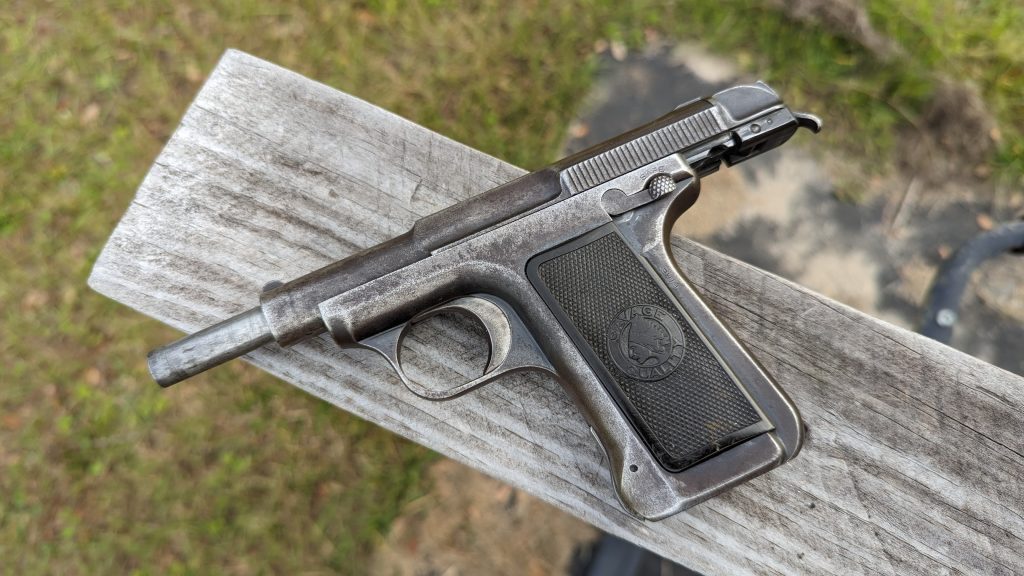
Savage actively advertised the weapon for its defensive features and marketed the weapon to women in particular. For its era, it could be quite the gun. In an era where cowboy guns held six and most and were commonly carried with five or ten rounds in a magazine, they must have felt almost belt-fed.
What’s Not So Modern
The gun’s old-school ergonomics wouldn’t qualify it for the modern world. There is a somewhat awkwardly placed thumb safety. That safety doubles as a slide lock if you want to keep the gun open. The magazine release is a European heel design. It’s functional, but it isn’t fast. But hey, you have ten rounds; why would you need to reload?
My model was produced in 1919, according to serial number research. It’s not a gun I would grab given modern choices, but if I were a concealed carrier at the turn of the century, this would be my choice. It’s the micro compact of its era and really doesn’t get the credit it deserves.

